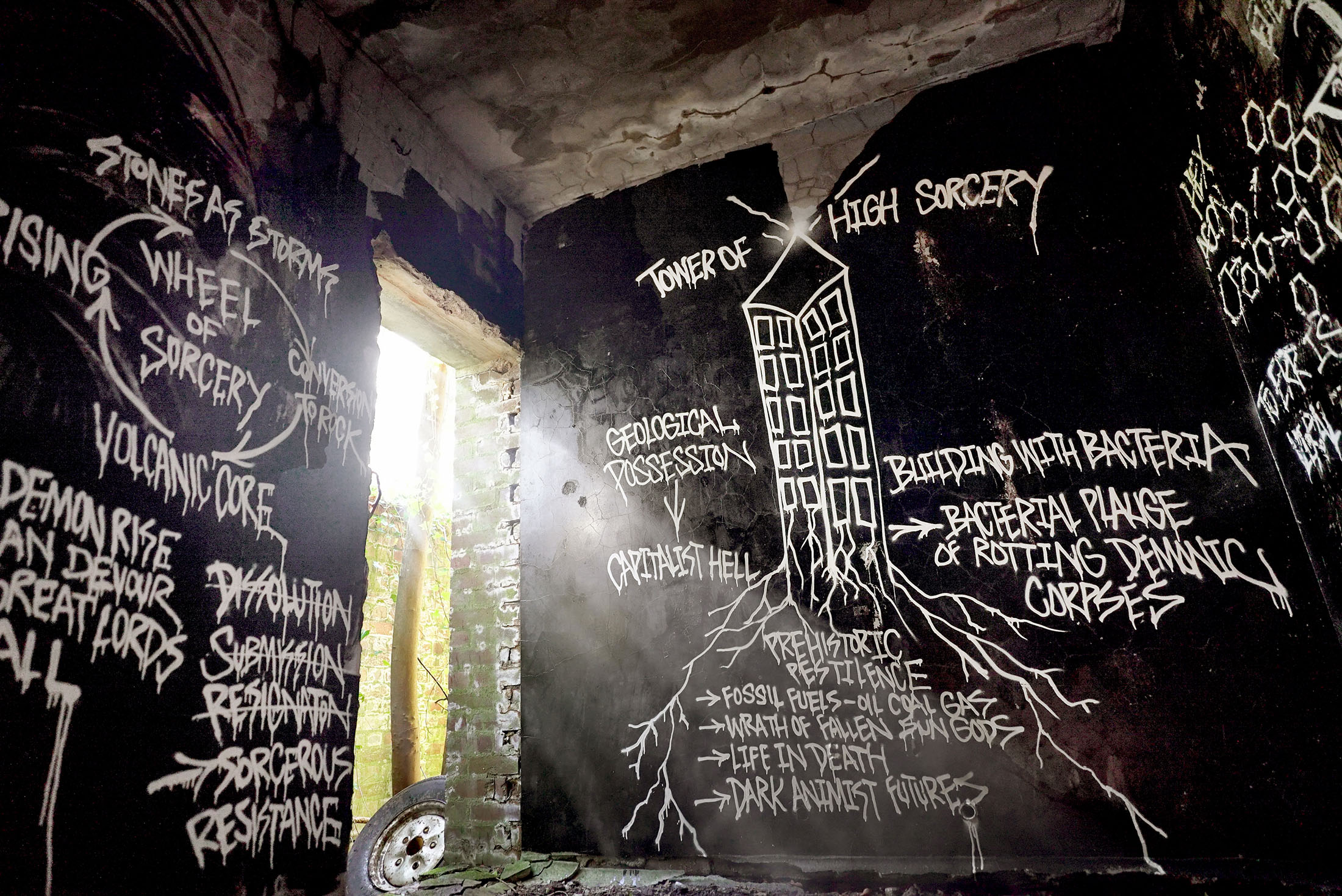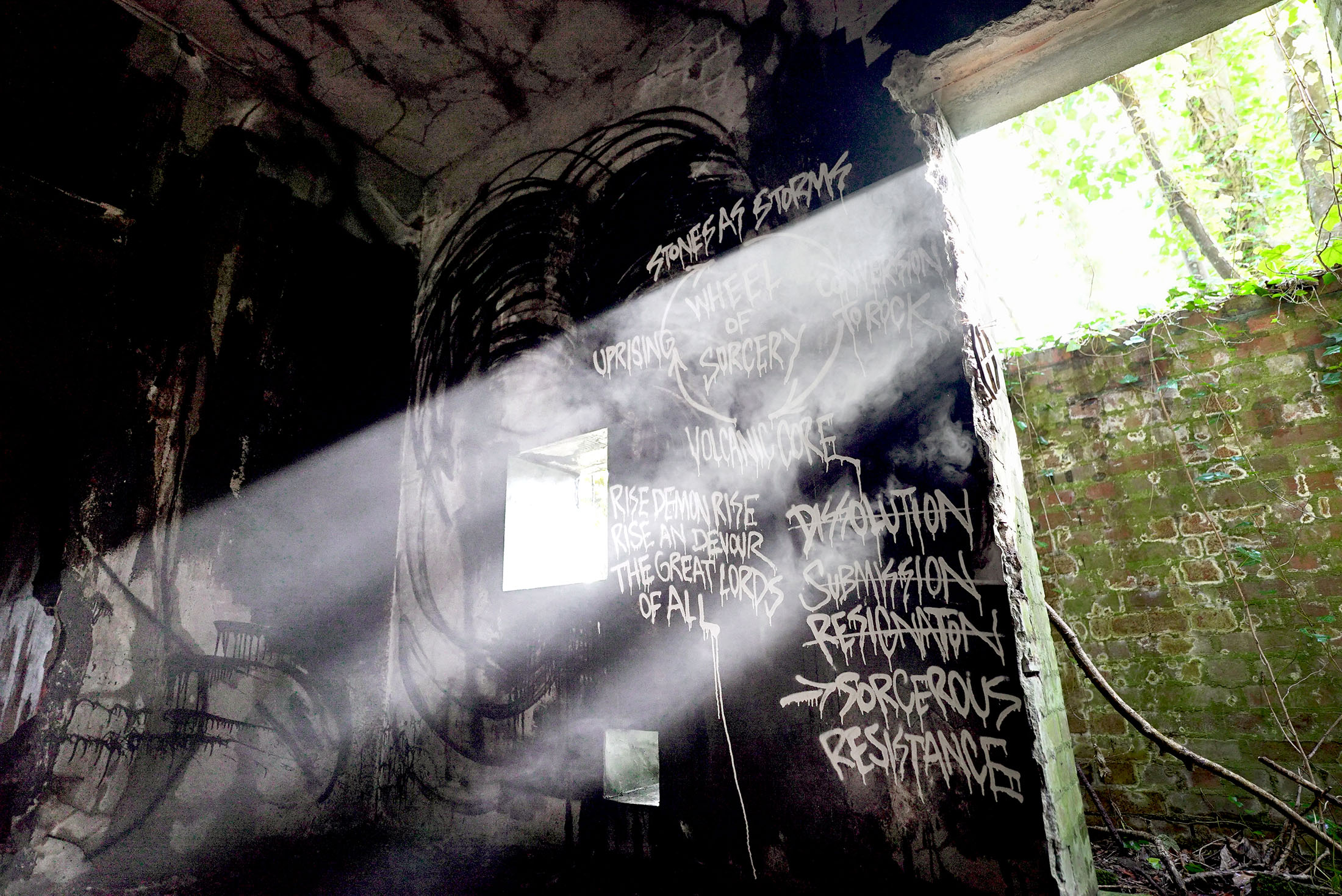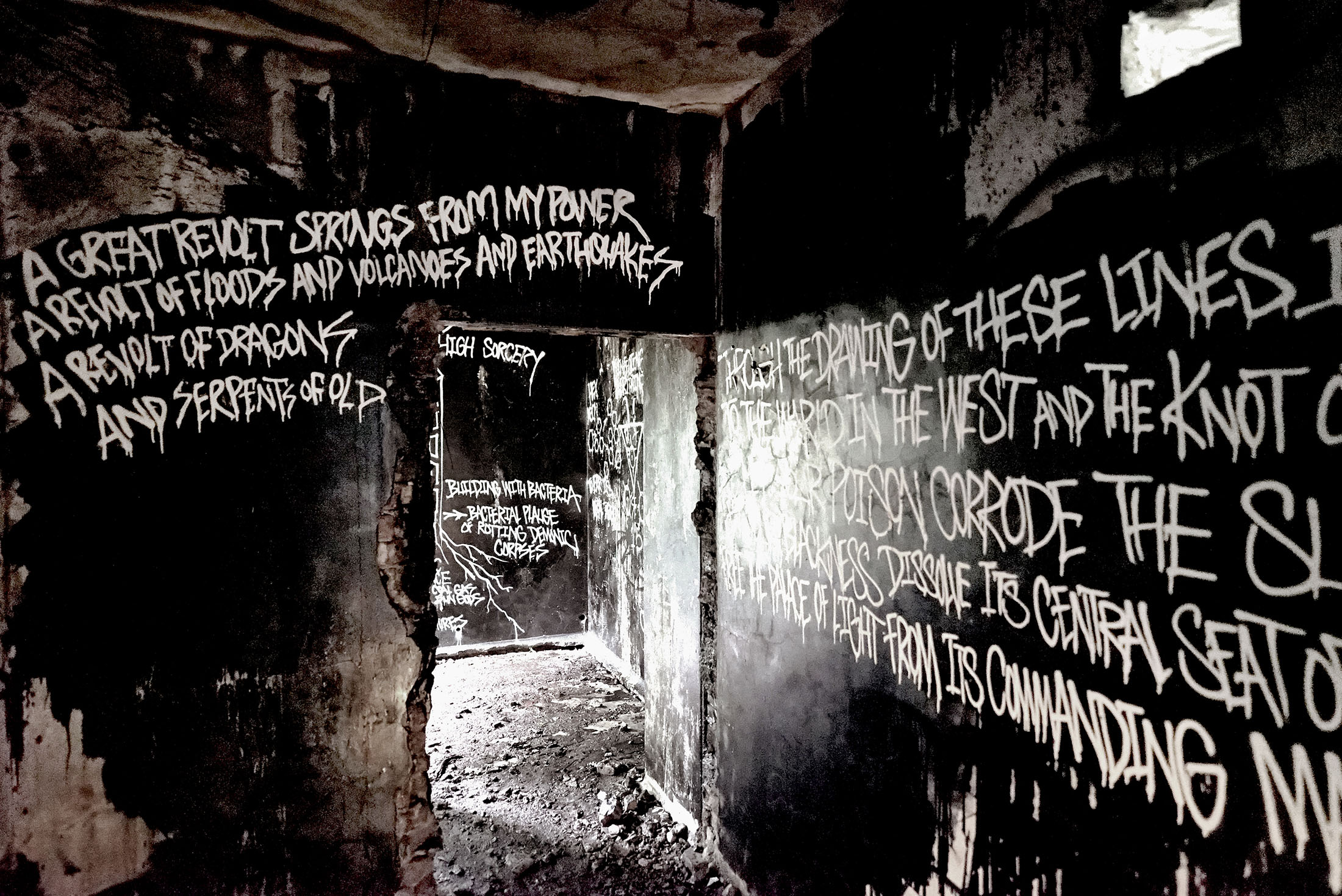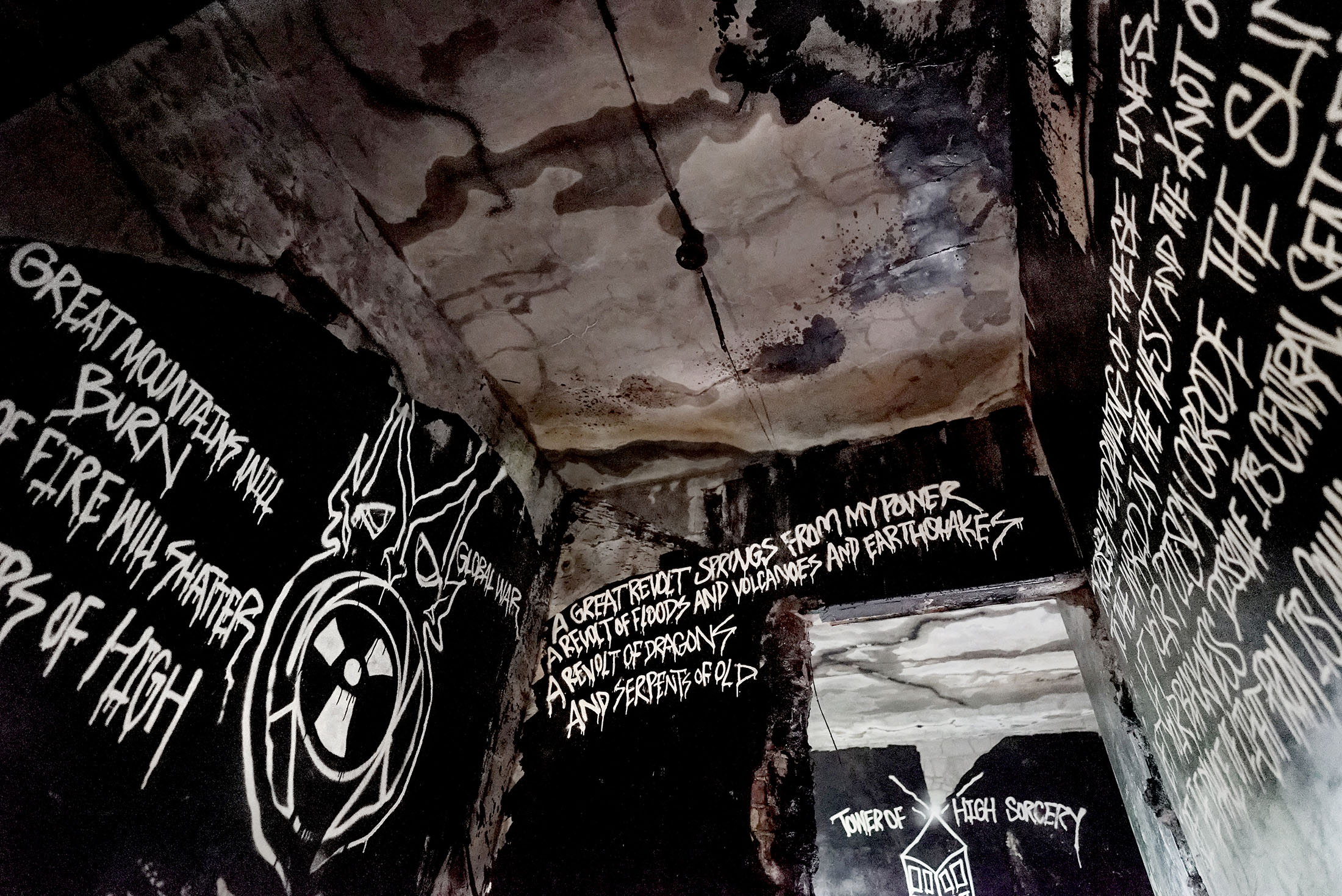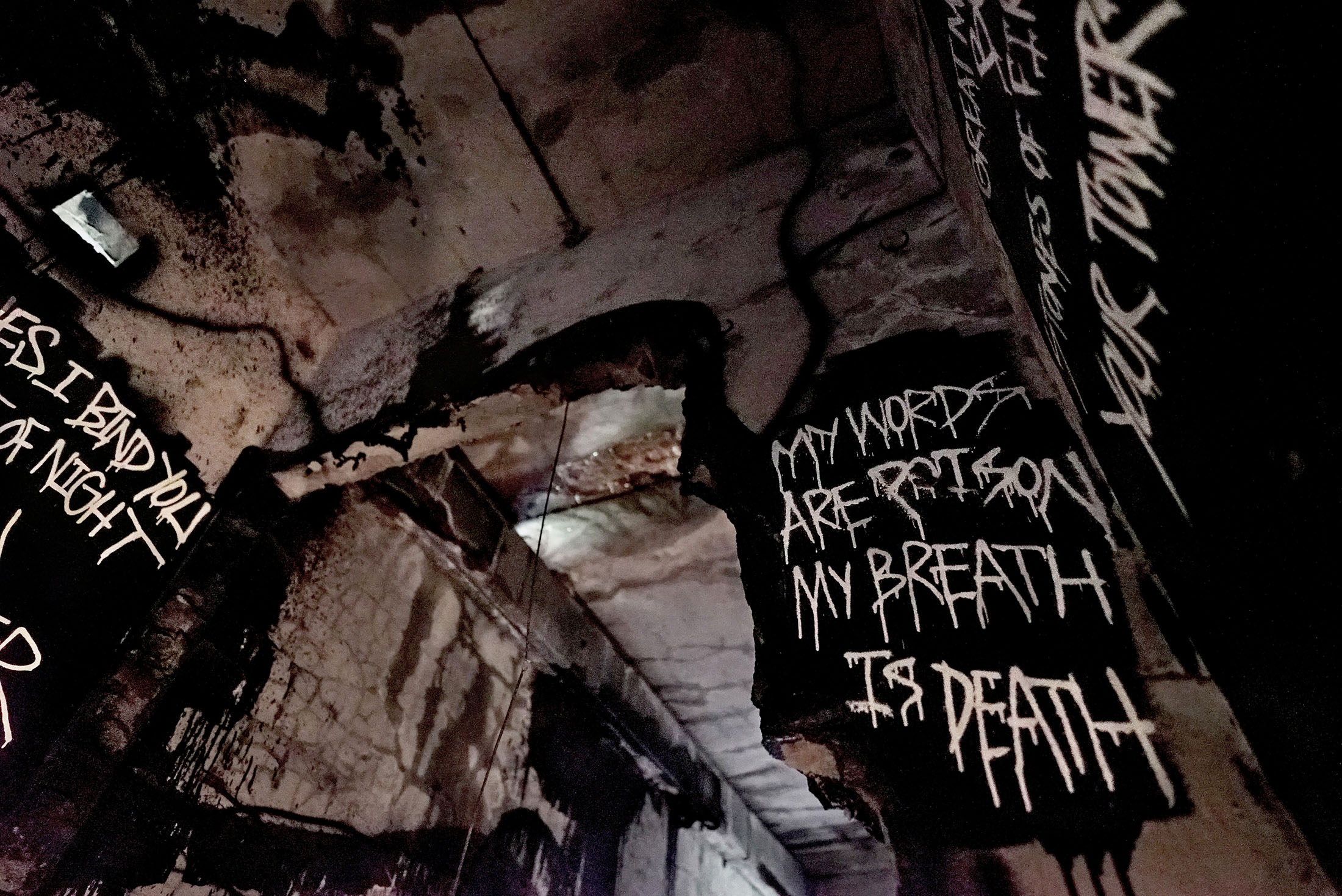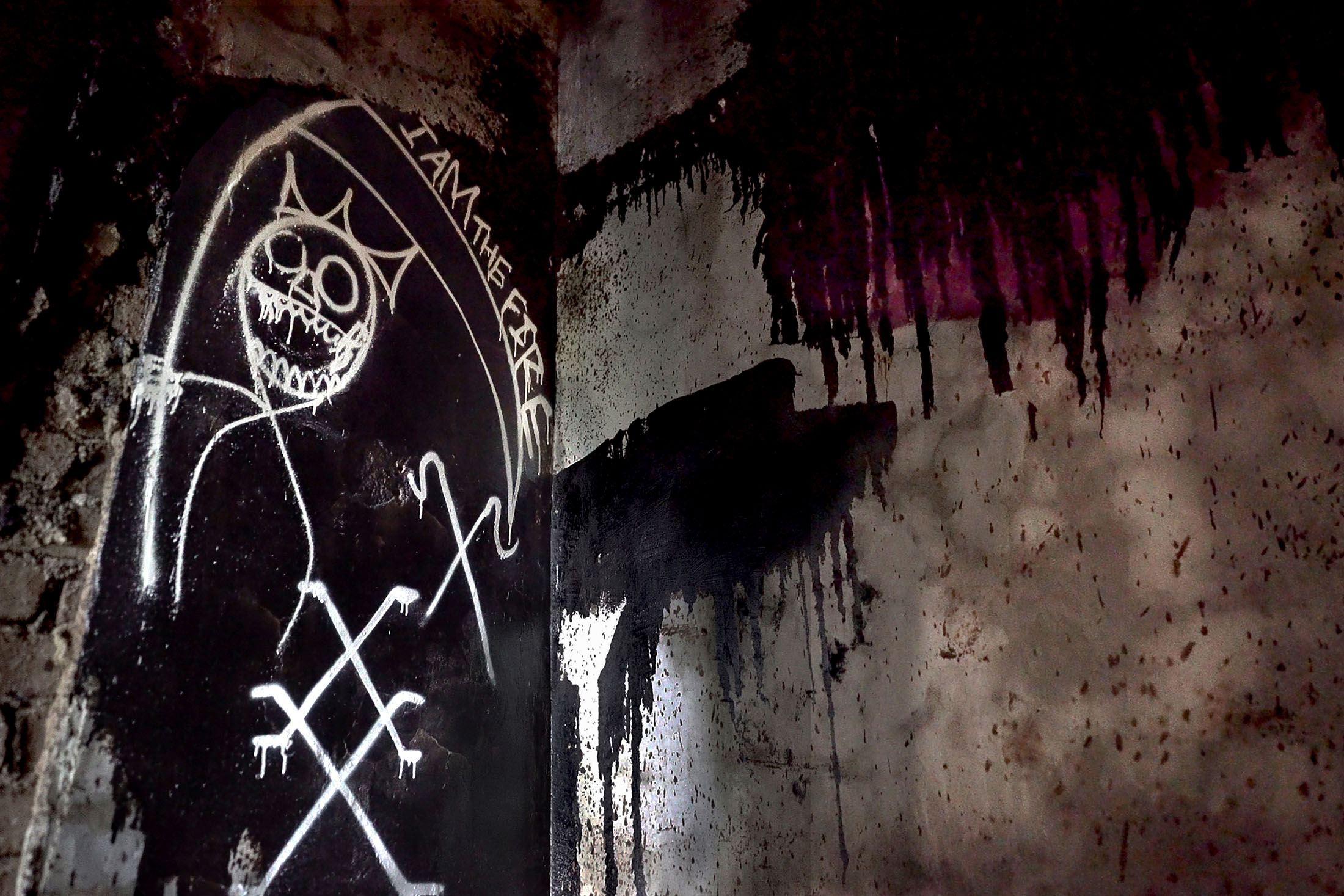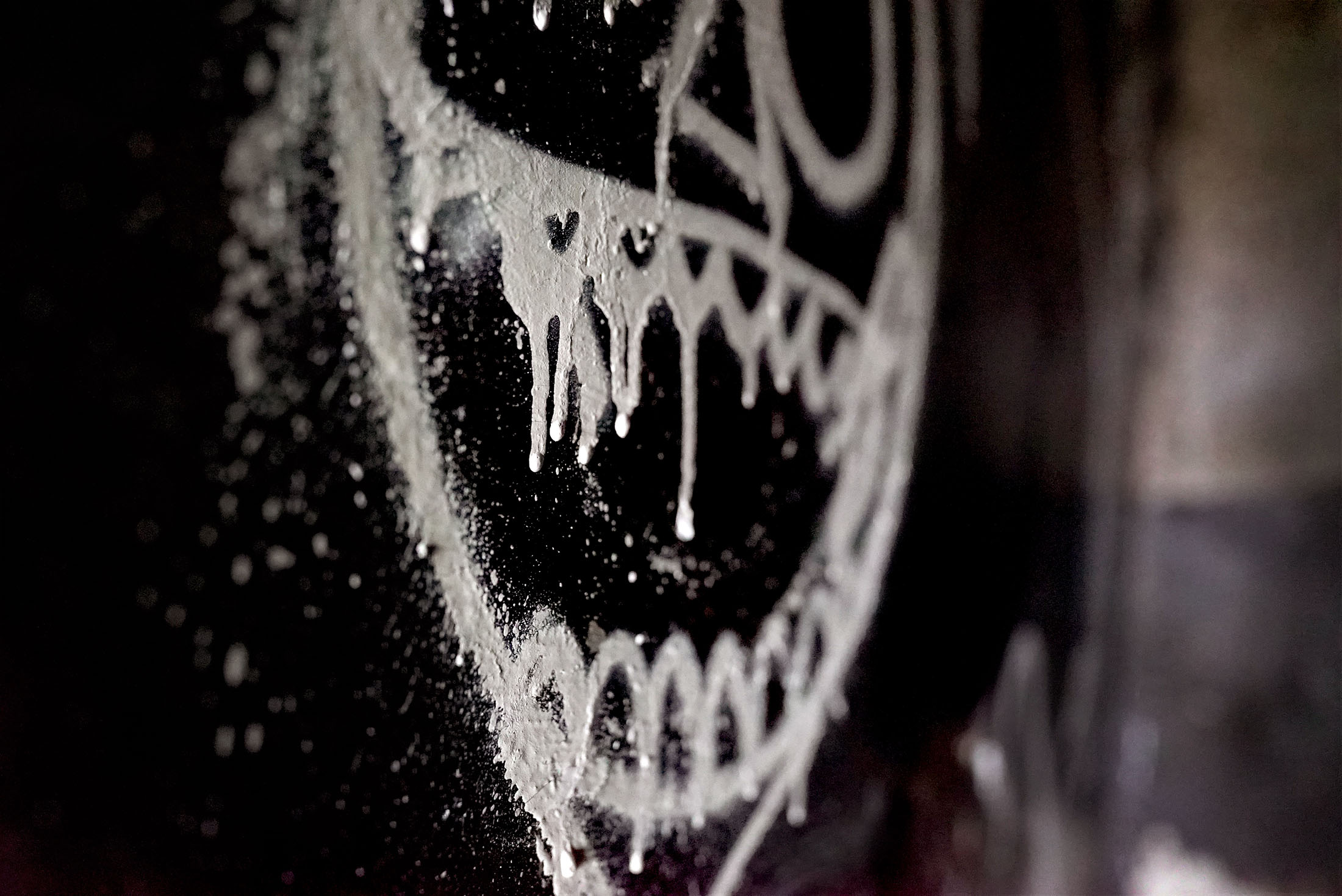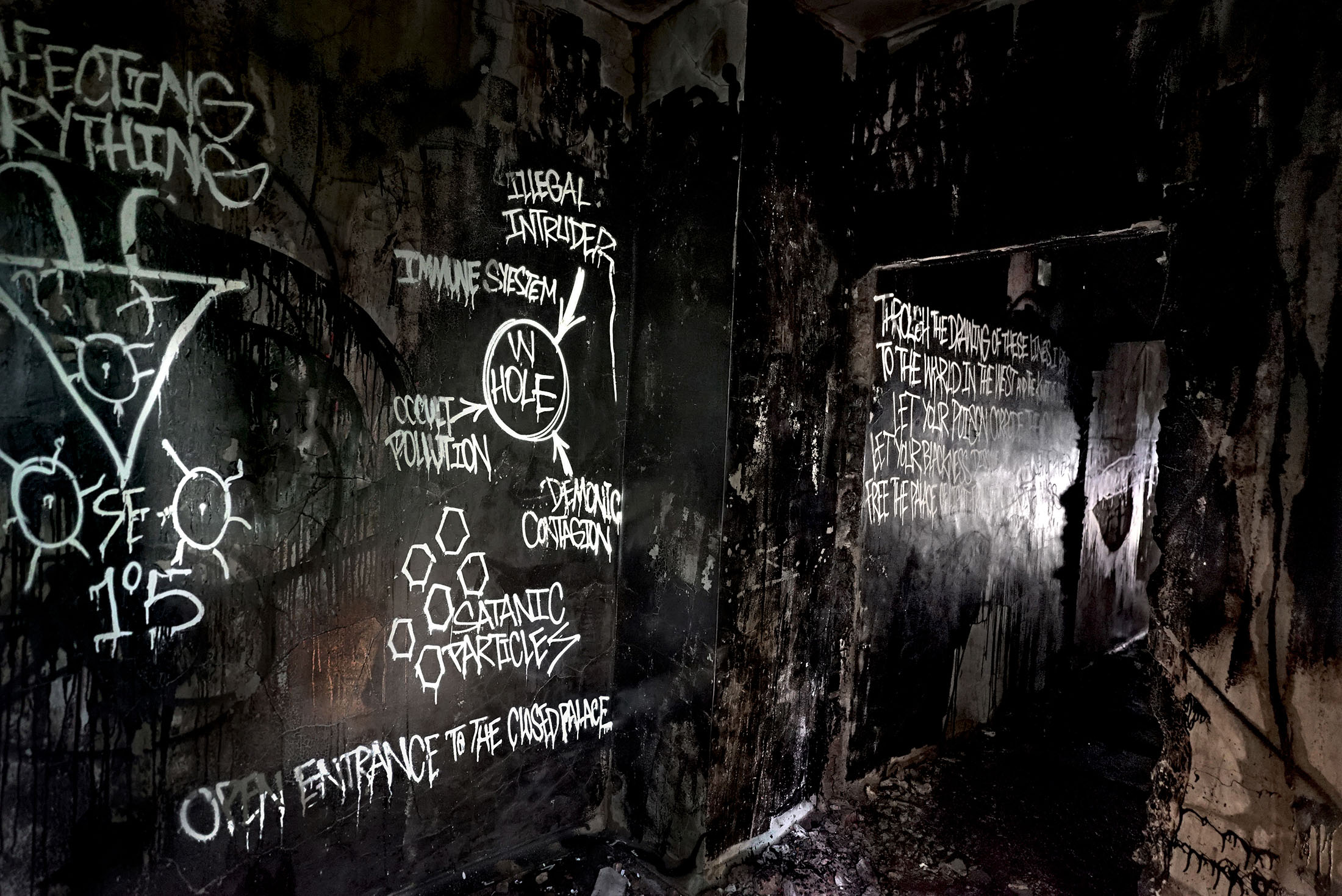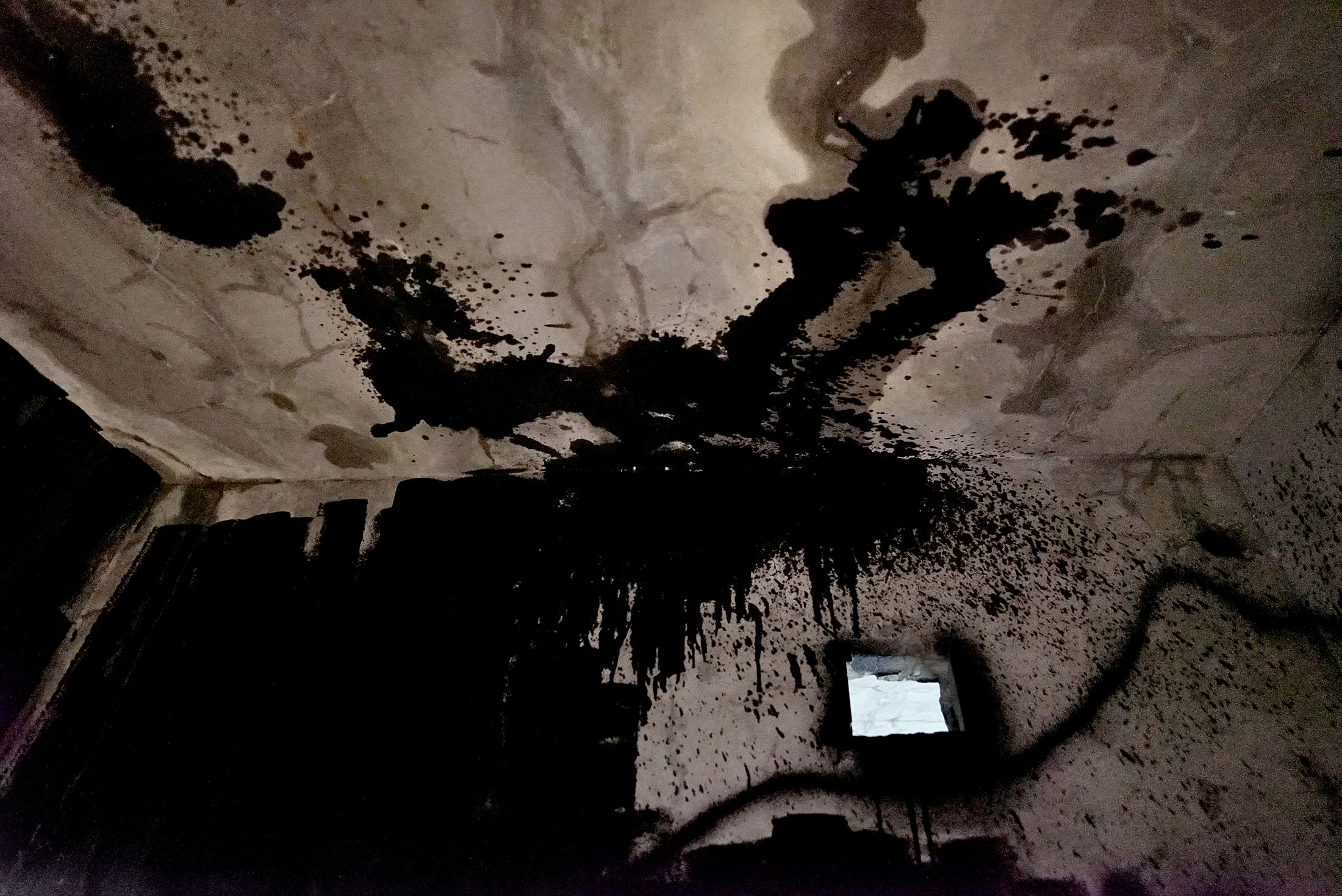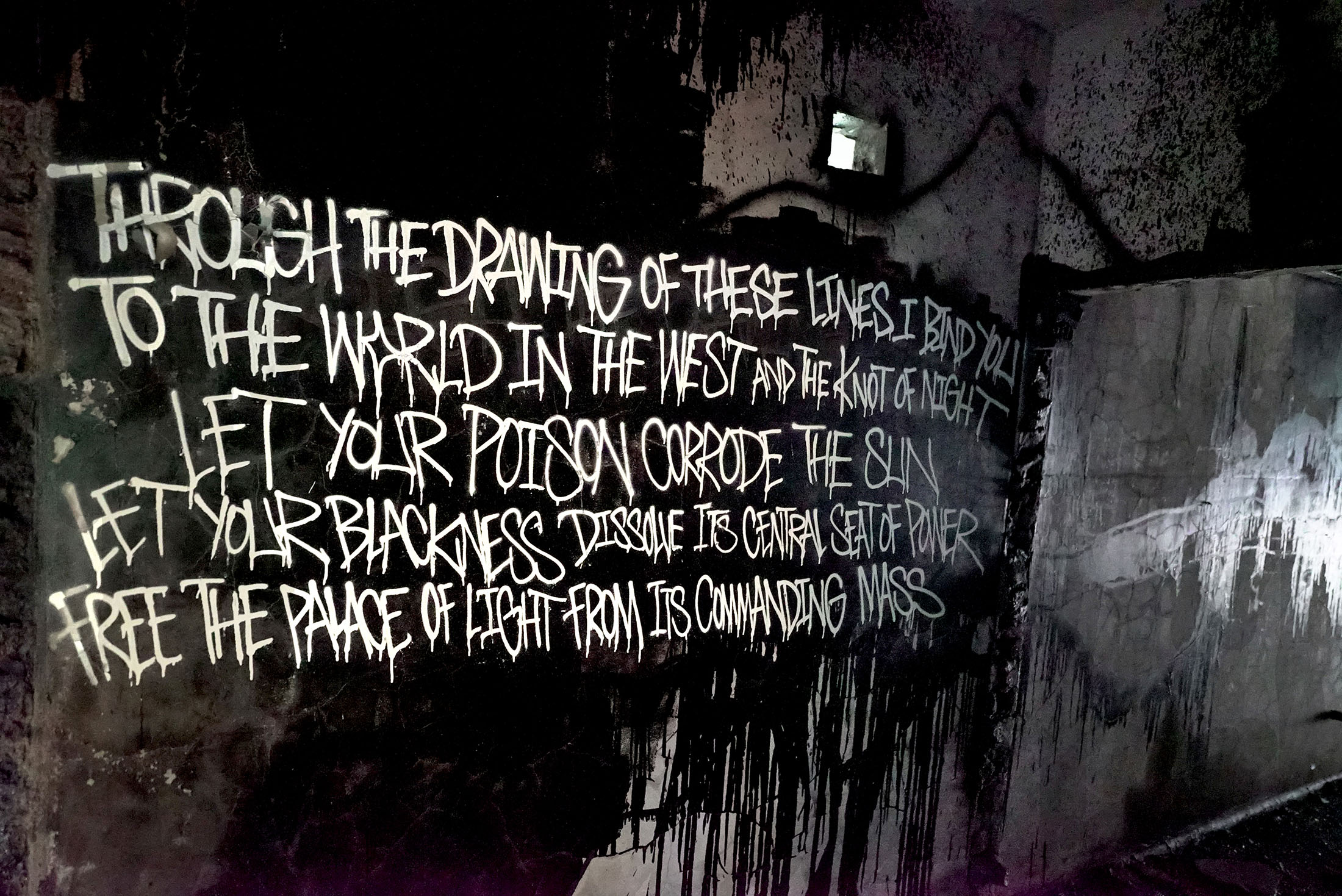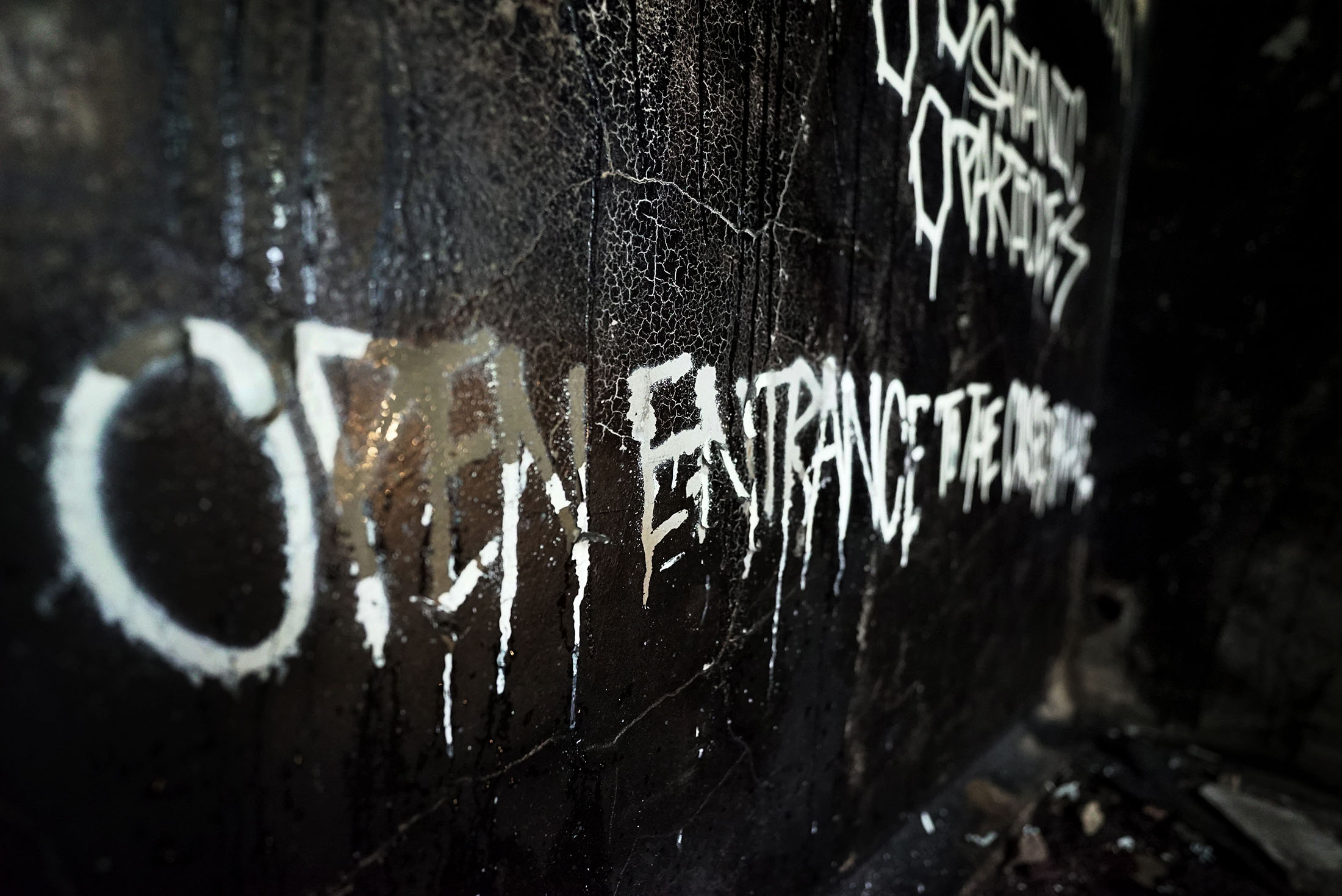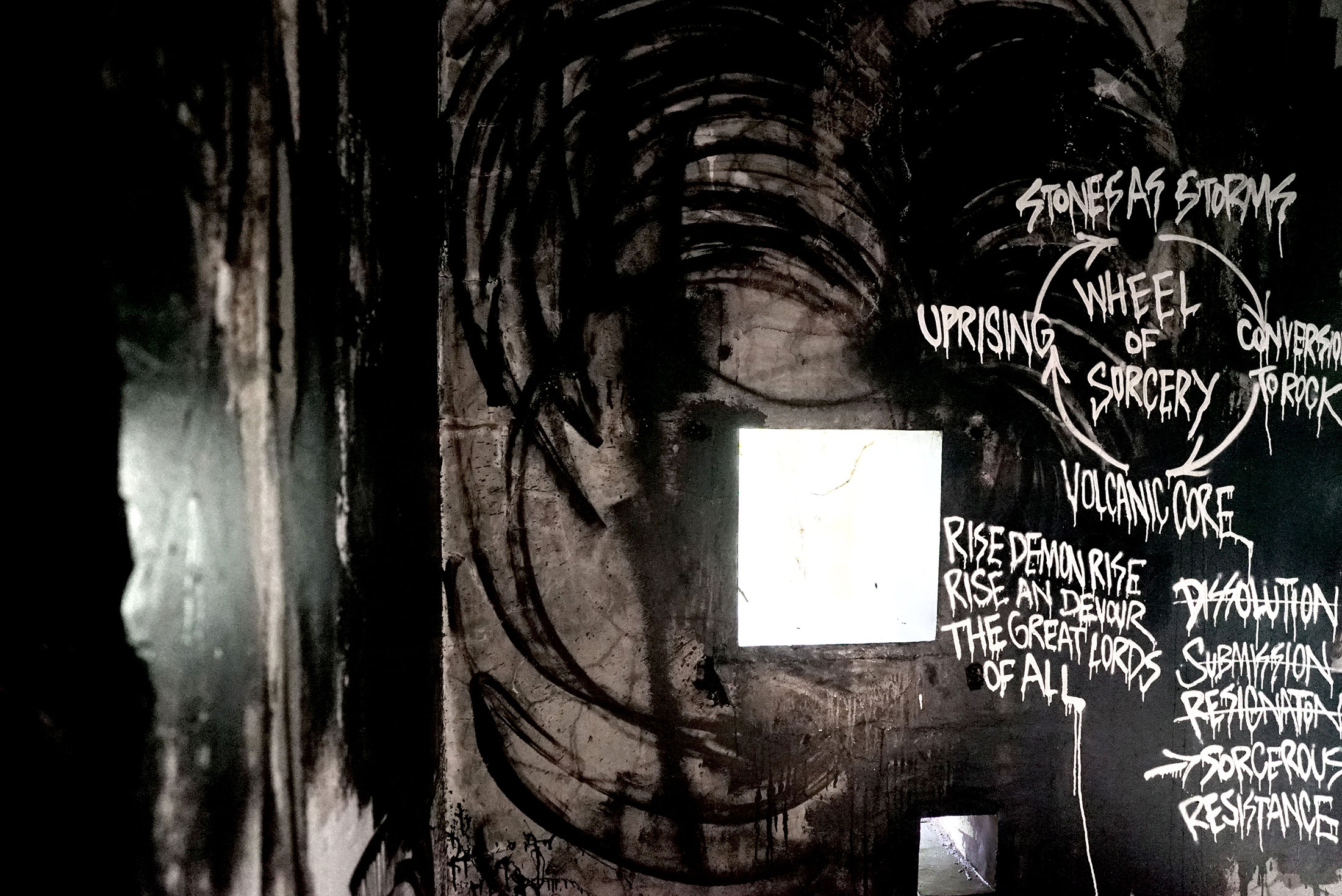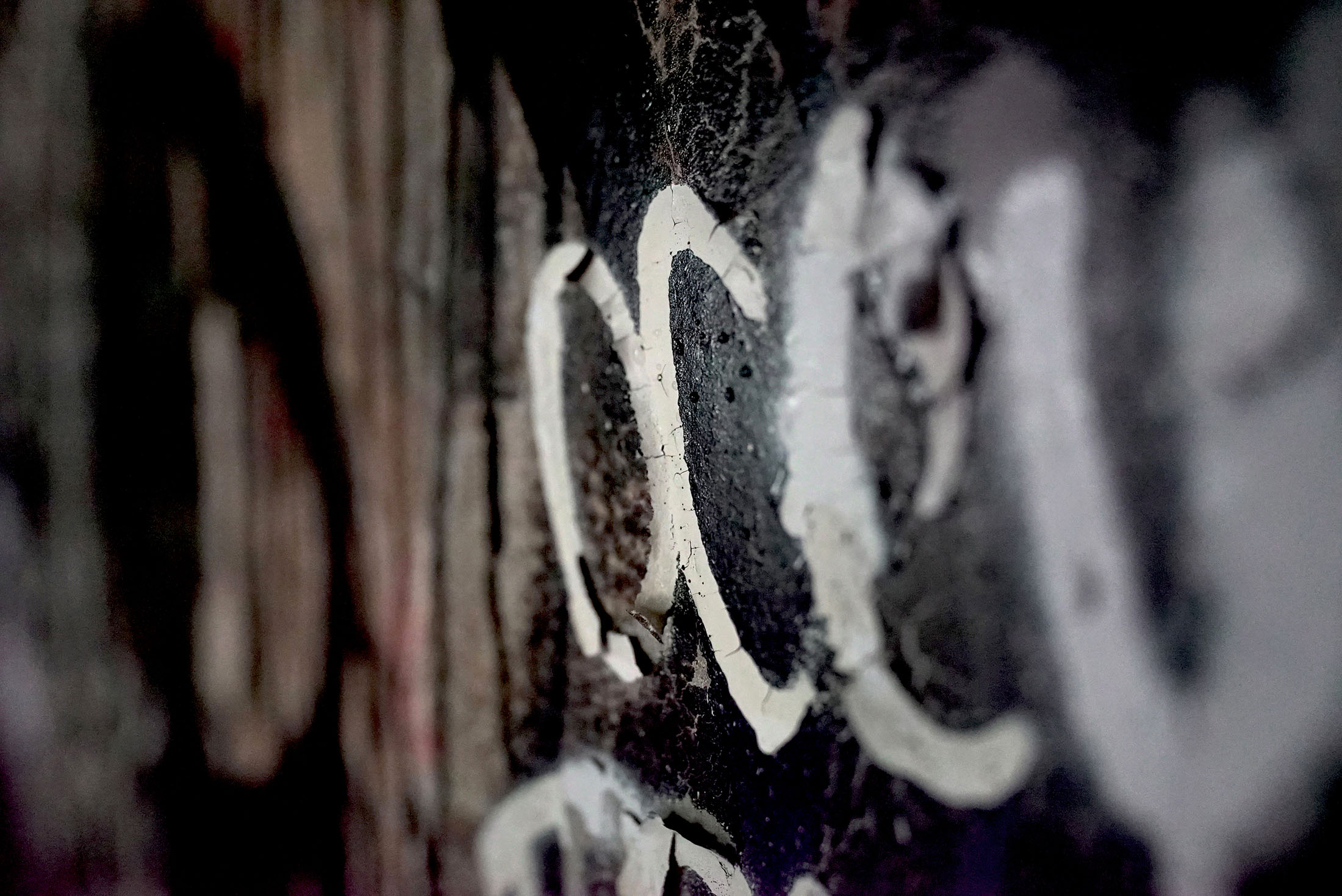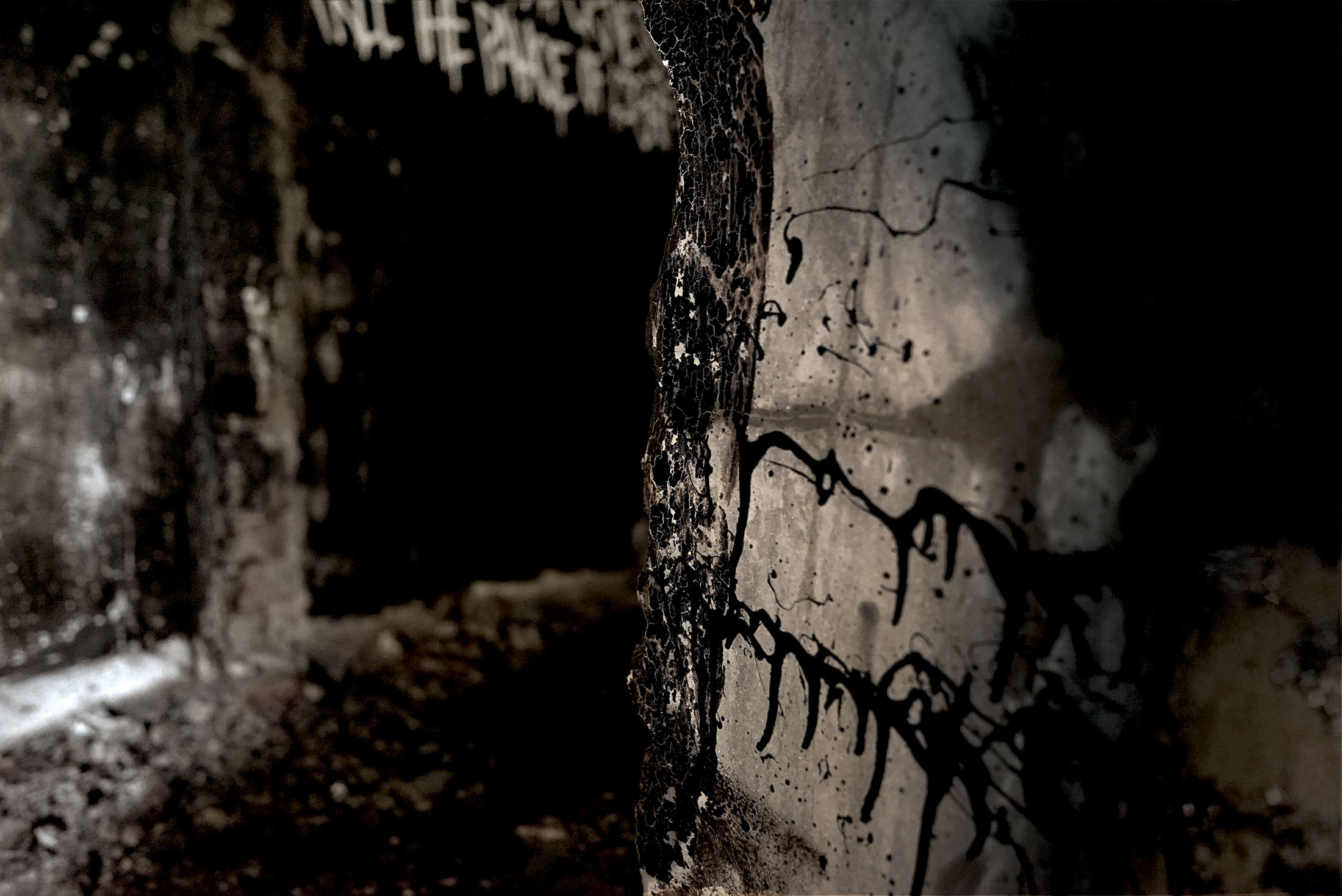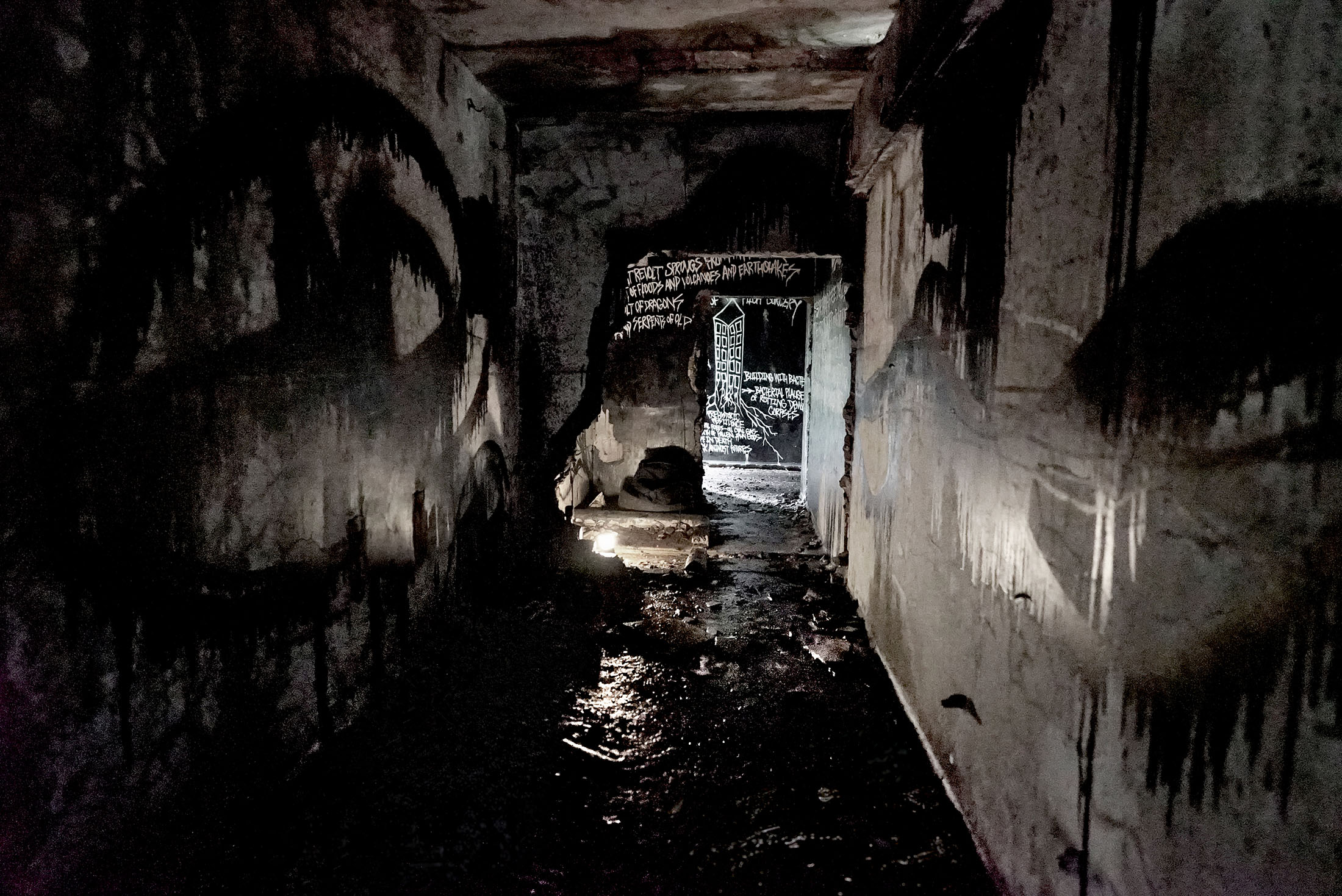WHO OWNS US?
Experiments in the Game of Control
Conducted in 2024 by Ad Twister & Gast Bouschet
Our intervention aims to counteract the authority that is exercised over us in a time of light and information overload. It manifests itself in the overwriting of the symbols that epitomise the power of what Reza Negarestani calls solar capitalism, but ultimately points to the fact that we too must let go of control. It may seem paradoxical and inconsistent with the prevailing definition of magic in the West, but we believe that the secret of today’s sorcerous participation in the world is not that we impose our own will, but that we let go of it at the decisive moment of action. By embracing the unexpected, we open ourselves up to the possibility of the new and unprecedented.
But let us place our intervention in the context in which it unfolds. The experiments mentioned in the title take place in a decaying building that served as a hospital for wounded soldiers during the Second World War and is now increasingly overgrown by rampant vegetation. Fueled by historical trauma and the current fear of ecological devastation and the looming threat of global war, our intervention seeks to transmute a space of abandonment and pain into an experience of empathic power. Make no mistake: sorcerous art is very much about power, but it is also unashamedly vulnerable. The fragility of the black painting and the crumbling writings on the walls are integral to the work. The real purpose of our countercurse is to release its underlying forces through its material decay.
The work is based on a combination of what we call predatory abstraction with a series of diagrammatic spells that both desecrate the symbols of empire and activate the latent, regenerative alchemical energy of place. The intervention aims to avoid falling into apathy and despair in the face of a world that in many ways feels like evil magic. These are unprecedented and unpredictable times, but one piece of wisdom remains true: revolutions begin when we change the way we look at the world. And this is where sorcerous art comes in, because it changes perception and therefore the structure of reality.
Through affective spellwork we intervene in architectural and mental spaces and reshape them. Our intervention ultimately amounts to a kind of poiso-medicine that feeds into both the fabric of the building and in the neurological mechanisms of the brain that are responsible for the associations that form the basis for creative thinking. We have spread the incantations throughout the rooms so that they contaminate the building, but it is not so much about the countercurse itself, but what it triggers.
The work was created in several phases, separated in time. The last and perhaps most sorcerously effective was to contaminate what we had created through a chaotic blackening. Visual degradation towards meltdown is the biggest threat to political and corporate rationality, which needs visibility and clarity. In order to free ourselves from the apparatus of capture, it is not enough to hex the powers that be through the interaction of verbal and visual signifiers. We must drown the symbols of empire along with our curses in their own poisoned hearts and drag them into the abyss of undifferentiation where they merge and dissolve. The key to our black magic work is transference into a chaotic massa confusa that is fullness rather than emptiness and holds infinite potential for new creation and revolutionary change.
